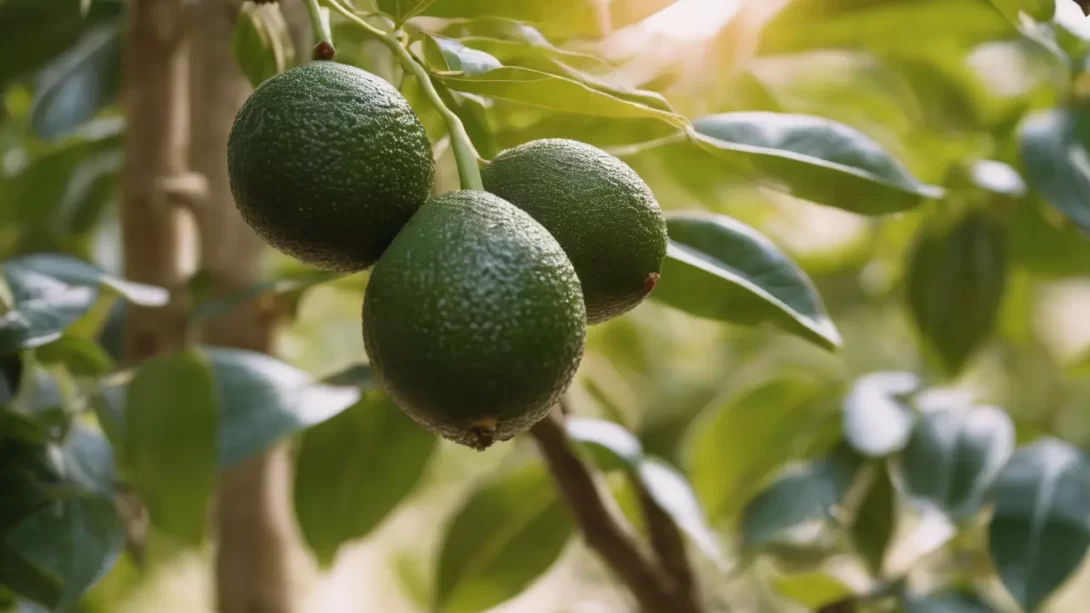Avocados, known for their creamy texture and rich flavor, are a favorite in kitchens around the world. However, sometimes they can have a disappointing stringy texture, which can detract from their culinary appeal. This article aims to delve into why some avocados turn out stringy and how to prevent this issue, whether you’re a home gardener or a consumer.
Avocado Texture
The ideal avocado texture is smooth, buttery, and uniformly creamy, making it perfect for spreads, dips, and salads. Stringy avocados, on the other hand, contain fibrous strands that run through the flesh, creating an unpleasant texture. This stringiness is not harmful but can be off-putting and diminish the quality of the fruit.
Common Causes of Stringy Avocados
There are several factors that can contribute to the development of stringy textures in avocados:
Genetic Factors
- Varietal Differences: Some avocado varieties are more prone to stringiness than others. For instance, certain types of Hass avocados may develop stringy textures more frequently.
- Genetic Makeup: The genetic composition of the avocado tree plays a crucial role in determining the texture of the fruit. Some trees may naturally produce fruit that is more likely to be stringy.
Growing Conditions
- Climate Impact: Avocados thrive in specific climates, and deviations from these ideal conditions can stress the trees and affect fruit quality. Extreme temperatures, both hot and cold, can influence the texture of the avocados.
- Soil and Water: The quality of the soil and the availability of water are also significant factors. Poor soil quality or inconsistent watering can lead to stress in the plant, resulting in stringy fruit.
Maturity and Harvesting
- Harvest Timing: Picking avocados at the wrong time can greatly affect their texture. Harvesting too early can lead to underdeveloped flesh, while waiting too long may cause the fruit to become overripe and fibrous.
- Ripening Process: The process of ripening also plays a part. Avocados ripen off the tree, and how they are stored during this period can impact their texture. Incorrect ripening conditions may contribute to stringiness.
Nutritional and Environmental Stress
The health of the avocado tree and the conditions under which it grows can significantly impact the texture of the fruit. Stringiness can sometimes be a response to various stress factors:
- Nutritional Deficiencies: Avocado trees require a well-balanced mix of nutrients to produce high-quality fruit. Deficiencies, particularly in key nutrients like nitrogen, potassium, and phosphorus, can lead to poor fruit development, including stringy textures.
- Environmental Stressors: Conditions such as drought, excessive rain, or temperature extremes can stress the avocado trees. Stress can redirect the tree’s resources away from fruit development, resulting in lower quality, stringy avocados.
- Pest and Disease Impact: Certain pests and diseases can affect the health of avocado trees, which in turn can influence the texture of the fruit. Pests like mites or diseases like root rot can cause stress that may lead to stringiness.
Solutions and Preventive Measures
While some factors like genetics and climate may be beyond control, there are steps that can be taken to minimize the risk of stringy avocados:
- Selecting Suitable Varieties: If you’re growing avocados, choose varieties known for their creamy texture and lower incidence of stringiness. Research and local nursery advice can help in making the right choice.
- Optimal Growing Conditions: Ensure that avocado trees are planted in well-draining soil and in a location that meets their climate needs. Proper irrigation and mulching can help maintain consistent soil moisture levels.
- Balanced Nutrition: Regularly test soil and provide balanced fertilization to meet the nutritional needs of avocado trees. A well-nourished tree is more likely to produce high-quality fruit.
- Harvesting and Ripening Practices: Harvest avocados at the right stage of maturity. Store them under appropriate conditions to facilitate even ripening without excessive stress on the fruit.
Conclusion
Stringy avocados can be a disappointment for avocado lovers, but understanding the causes of this texture issue is the first step in addressing it. Whether due to genetic factors, growing conditions, or environmental stresses, the reasons behind stringy avocados are varied and often interconnected.
For gardeners and farmers, selecting the right avocado varieties and providing optimal growing conditions are crucial steps in ensuring the production of creamy, high-quality fruit. This includes managing soil health, ensuring adequate water supply, and protecting the trees from extreme environmental conditions and pests.
For consumers, understanding the best practices for harvesting and ripening can significantly impact the quality of the avocados they enjoy. Buying avocados that are correctly ripened and storing them properly at home can reduce the chances of encountering stringy textures.
In summary, while not all factors leading to stringy avocados can be controlled, many can be managed through careful selection, attentive cultivation, and proper post-harvest handling. By addressing these factors, both growers and consumers can increase their chances of enjoying the rich, smooth texture that makes avocados a culinary favorite.
Avocados continue to be a versatile and nutritious addition to diets worldwide. Recognizing and mitigating the factors that lead to stringiness will help ensure that this fruit remains a delightful part of meals and snacks, offering not just health benefits but also sensory enjoyment in every bite.



